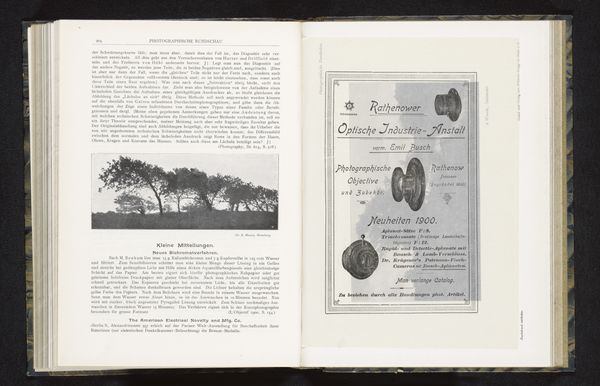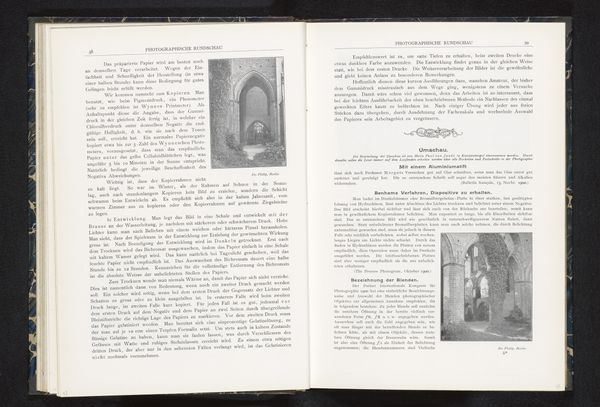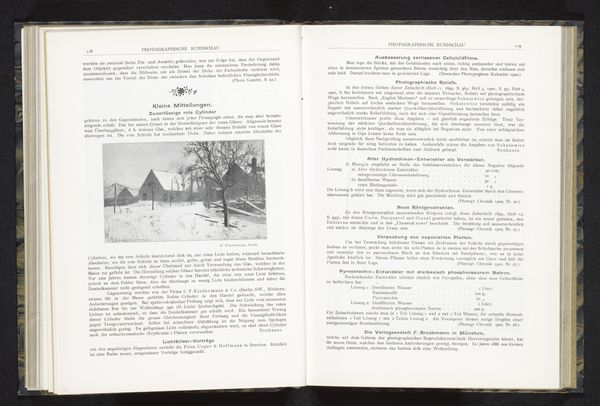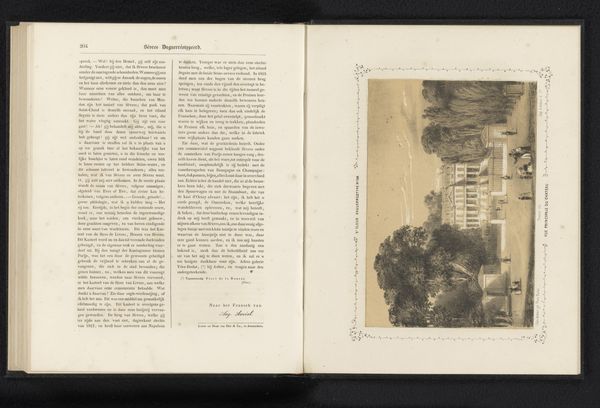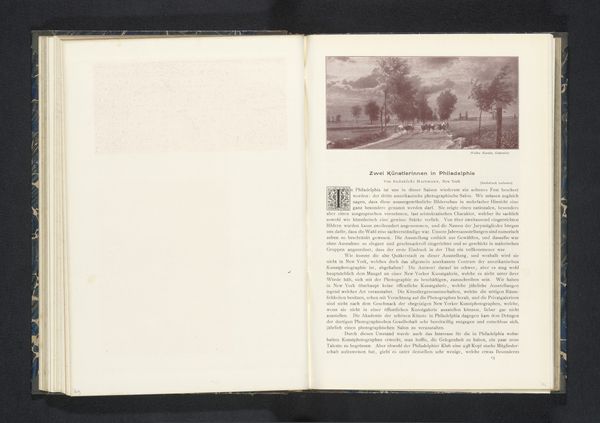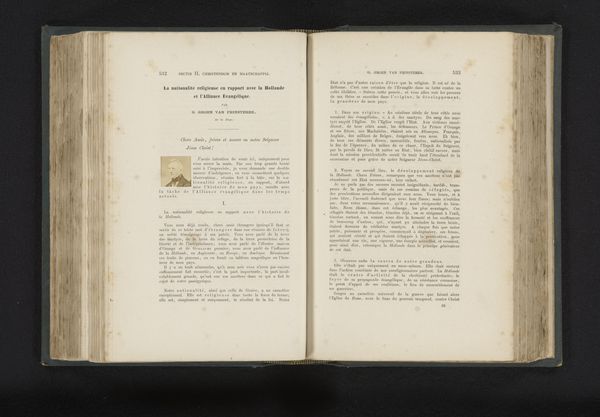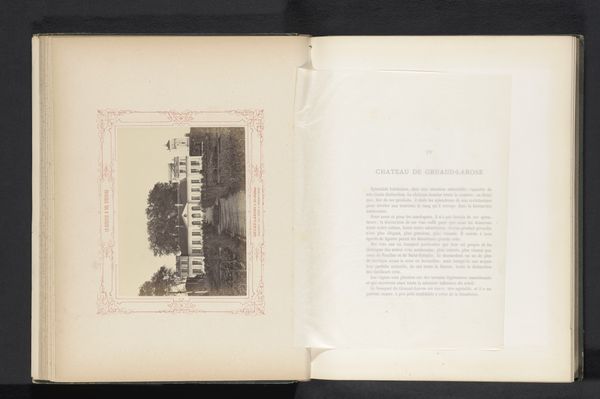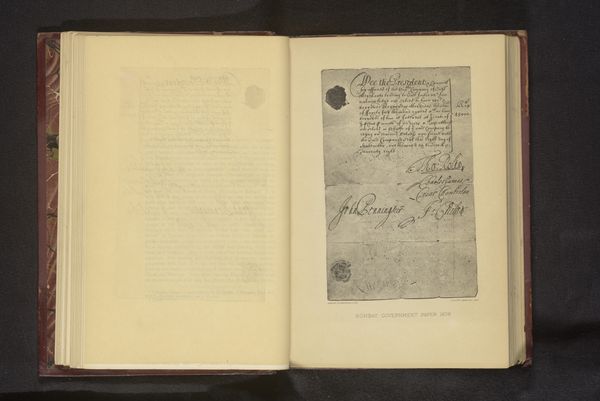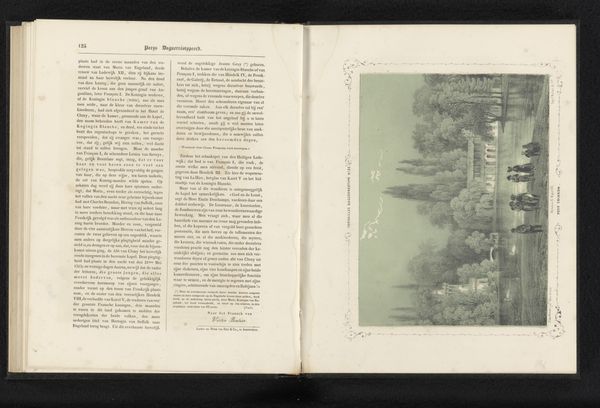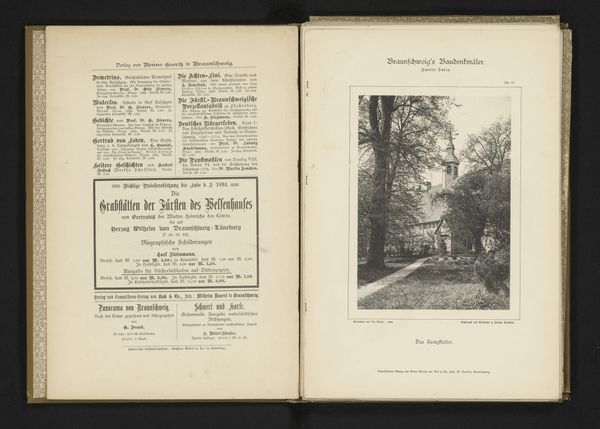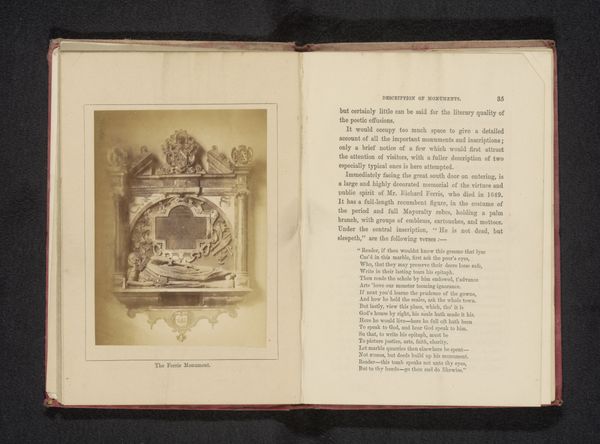
print, photography, gelatin-silver-print
#
tree
#
still-life-photography
#
pictorialism
# print
#
landscape
#
photography
#
road
#
gelatin-silver-print
#
realism
Dimensions: height 63 mm, width 111 mm
Copyright: Rijks Museum: Open Domain
Curator: I'm struck by the quietude of this photograph; it feels almost dreamlike. Editor: I find myself drawn to "Gezicht op een pad langs twee huizen en een boom," a gelatin-silver print, author unknown, pre-dating 1900. The use of gelatin-silver printing here indicates a shift toward accessible photographic reproduction but also toward a manipulation of tonality achievable through chemical processing. Curator: Absolutely, there's a tonal softness that almost abstracts the scene. The road receding into a hazy background, the bare tree, it’s all working to evoke a mood more than depict a place. Roads traditionally have a lot of symbolic weight, what feelings are conjured here? Editor: It reads like the symbolic path is actually absent; its end point obscured by fog or haze. Symbolically this might communicate uncertainty and also reflect how early photographic landscapes captured and mirrored emotional responses to modernization; what had been the domain of romantic painting and print making. Also the humble houses - they have none of the trappings of grandeur or permanence. Their roof lines feel slumped. Perhaps we can read social context in them in the sense of lives that are similarly downtrodden, in early industrialism. Curator: I do see the slumping rooflines adding a bit of mournful note. It almost reads as if that the materials themselves—the paint, the plaster, the silver—are enacting a quiet decay, mimicking the larger anxieties around shifts in labour markets toward the end of the 19th century. Editor: Right, consider the contrast between this humble path, these houses, the fragility of gelatin print, with the advent of optical lens technology - it might signal something about progress and cultural memory during a transformational period. Curator: Exactly. Perhaps these photographs were a tool that preserved rural imagery while labor practices continued to shift, with workers migrating from fields and pathways to places unseen, further out of view. Editor: I find that reflection very insightful and in the photographic details that you have analyzed, I see additional social elements I hadn't considered before.
Comments
No comments
Be the first to comment and join the conversation on the ultimate creative platform.
